Korea will soon be hosting the IEEE NANO Conference highlighting the convergence of four key industrial technologies: nano, MEMS, printed electronics and laser machining.
Jul 6th, 2010
Read more
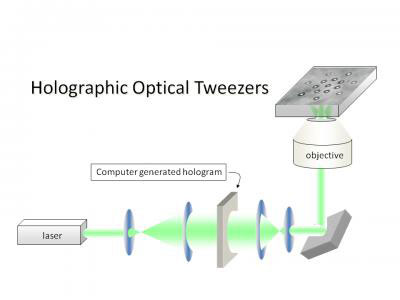 Star Trek fans will remember "tractor beams," lasers that allowed the Starship Enterprise to trap and move objects. Tel Aviv University is now turning this science fiction into science fact -- on a nano scale.
Star Trek fans will remember "tractor beams," lasers that allowed the Starship Enterprise to trap and move objects. Tel Aviv University is now turning this science fiction into science fact -- on a nano scale.
Jul 6th, 2010
Read more
A multidisciplinary team of researchers from UCLA, Northwestern University, UC Merced, Pennsylvania State University and Japan has succeeded in observing single-molecule interactions of bistable rotaxanes functioning in their native environment.
Jul 6th, 2010
Read more
Professor Carsten Soennichsen erhaelt ERC Starting Grant zur Erforschung molekularer Vorgaenge mit Hilfe der Nanotechnologie.
Jul 6th, 2010
Read more
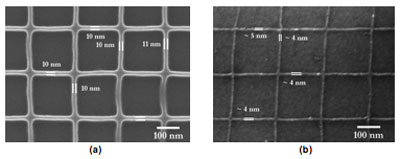 New method creates super-thin, high integrity, continuous metal lines that surpass today's semiconductor industry requirements.
New method creates super-thin, high integrity, continuous metal lines that surpass today's semiconductor industry requirements.
Jul 6th, 2010
Read more
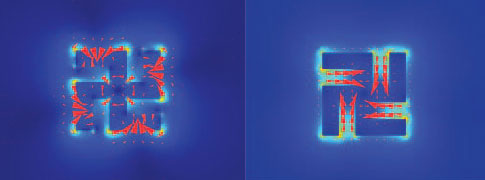 While those wonderful light sabers in the Star Wars films remain the figment of George Lucas' fertile imagination, light mills - rotary motors driven by light - that can power objects thousands of times greater in size are now fact. Researchers have created the first nano-sized light mill motor whose rotational speed and direction can be controlled by tuning the frequency of the incident light waves.
While those wonderful light sabers in the Star Wars films remain the figment of George Lucas' fertile imagination, light mills - rotary motors driven by light - that can power objects thousands of times greater in size are now fact. Researchers have created the first nano-sized light mill motor whose rotational speed and direction can be controlled by tuning the frequency of the incident light waves.
Jul 5th, 2010
Read more
Despite the growing utilisation of engineered nanomaterials in consumer products and innovative technological applications, there is at present no widely accepted definition of the term "nanomaterial" that is suitable as a basis for legislation on their safe use. Responding to a request of the European Parliament, the Joint Research Centre (JRC) published today a reference report entitled 'Considerations on a definition of nanomaterial for regulatory purposes".
Jul 5th, 2010
Read more
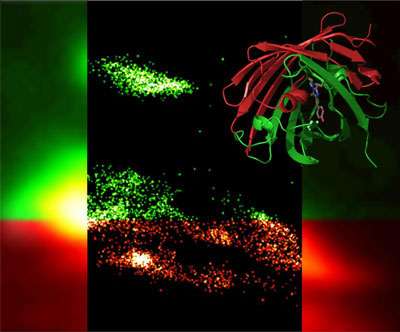 Ein neues fluoreszentes Markerprotein haben Forscher um Professor Gerd Ulrich Nienhaus vom KIT entwickelt: Bei dem photoaktivierbaren Protein 'mIrisF'" laesst sich sowohl das Fluoreszenzlicht ein- und ausschalten als auch die Farbe des Lichts von Guen nach Rot veraendern.
Ein neues fluoreszentes Markerprotein haben Forscher um Professor Gerd Ulrich Nienhaus vom KIT entwickelt: Bei dem photoaktivierbaren Protein 'mIrisF'" laesst sich sowohl das Fluoreszenzlicht ein- und ausschalten als auch die Farbe des Lichts von Guen nach Rot veraendern.
Jul 5th, 2010
Read more
Empa researchers have demonstrated how they can adjust process conditions to influence the properties of novel plasma polymer coatings containing silver nanoparticles.
Jul 5th, 2010
Read more
Manufacturing Digital's July issue offers a window into the nanoscale. With comments from Russell Cowburn, Professor of nanotechnology at Imperial College London, and Piet Christof Woelcken, nanotechnology expert at the Airbus Airframe and Architecture and Integration Department, Manufacturing Digital discovers the real power of nanotechnology.
Jul 5th, 2010
Read more
Protein-carbohydrate interactions play a crucial role in many biological processes such as cell-cell recognition and receptor-ligand interactions and catalysis. This thesis explores the possibilities of engineering the protei-carbohydrate interactions between carbohydrate-binding proteins and their ligands.
Jul 5th, 2010
Read more
A team of researchers at the University of South Australia have developed and patented new technology that allows for enhanced delivery of cosmetics and drugs through the skin.
Jul 5th, 2010
Read more
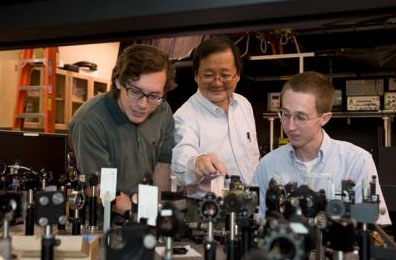 Using super-high pressures similar to those found deep in the Earth or on a giant planet, Washington State University researchers have created a compact, never-before-seen material capable of storing vast amounts of energy.
Using super-high pressures similar to those found deep in the Earth or on a giant planet, Washington State University researchers have created a compact, never-before-seen material capable of storing vast amounts of energy.
Jul 4th, 2010
Read more
Building on last year's popular webinars on the regulation of nanotechnology, Keller and Heckman and NanoReg are pleased to announce Nanotechnology Today 2010, a series of four new webinars designed to address important regulatory issues and the challenges associated with the safe development of nano-enhanced products.
Jul 2nd, 2010
Read more
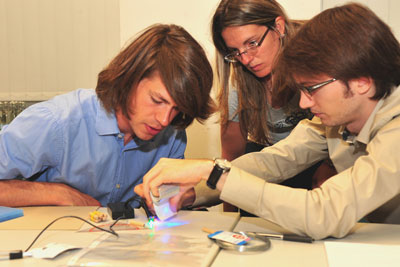 Carl Zeiss hosts the international competition for upcoming engineers.
Carl Zeiss hosts the international competition for upcoming engineers.
Jul 2nd, 2010
Read more
Researchers have built a thermal-powered insectlike robot with hundreds of tiny legs.
Jul 2nd, 2010
Read more







 Subscribe to our Nanotechnology News feed
Subscribe to our Nanotechnology News feed